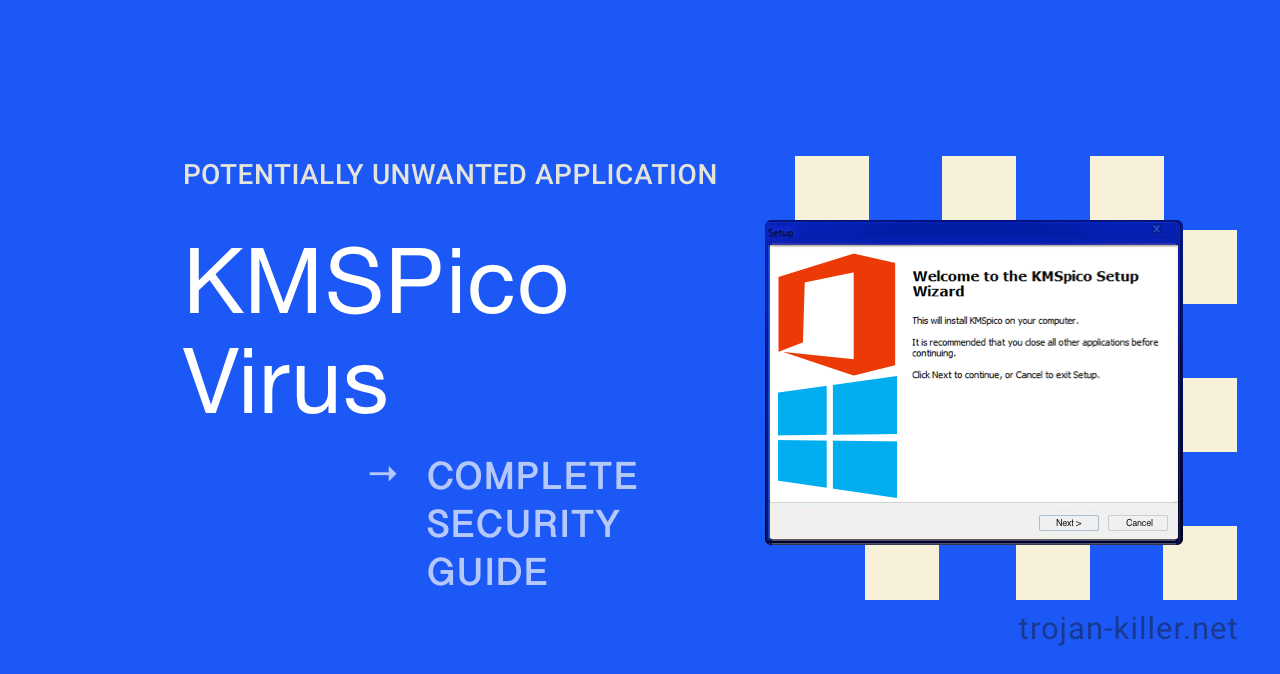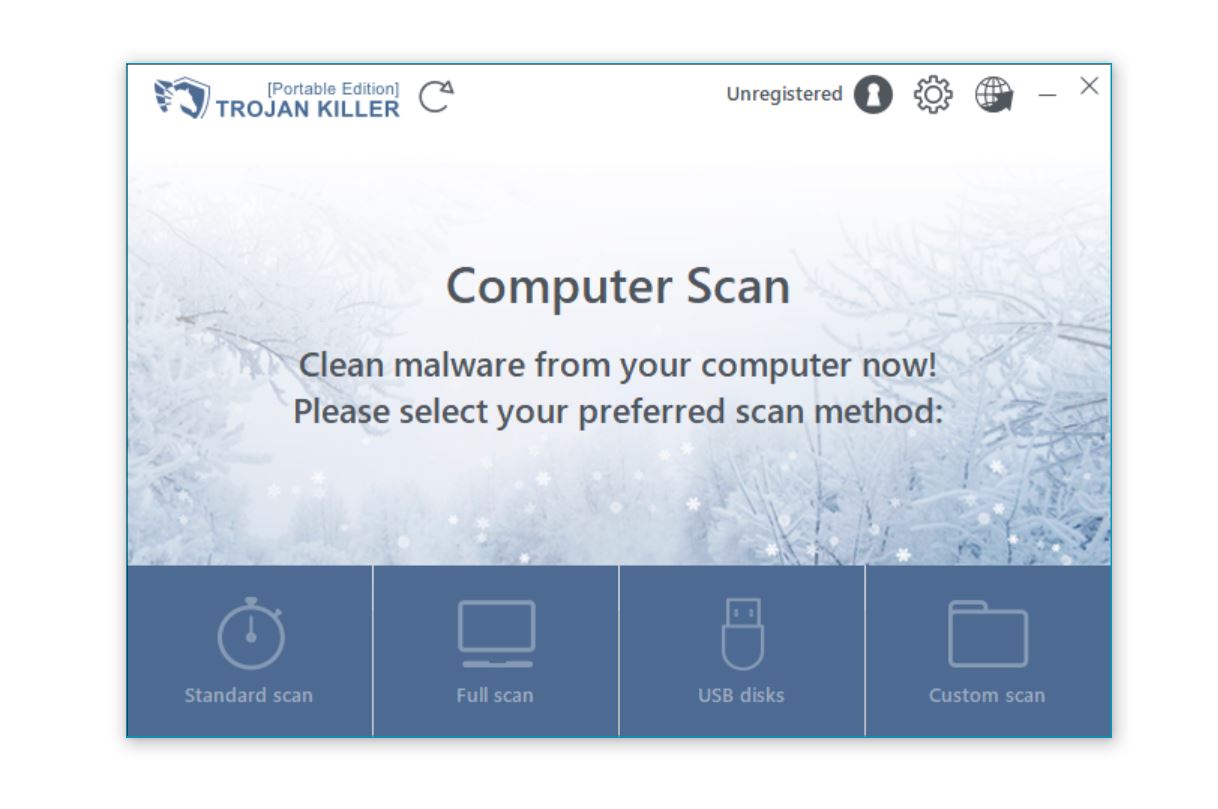Physical Address
Lesya Kurbasa 7B
03194 Kyiv, Kyivska obl, Ukraine
Physical Address
Lesya Kurbasa 7B
03194 Kyiv, Kyivska obl, Ukraine

Ever been tempted to bypass those expensive Microsoft license fees? You’re not alone. Many users turn to KMSPico, a widely circulated tool that promises to activate Windows and Microsoft Office products for free. It sounds like a sweet deal – all the premium features without opening your wallet. But here’s the catch: while you think you’re just saving money, you might actually be inviting serious security threats into your digital home. In this guide, I’ll walk you through what KMSPico really is, why it’s riskier than it appears, and how to safely remove it if you’ve already taken the bait.
| Threat Name | KMSPico, KMSAuto |
| Type | Potentially Unwanted Application (PUA), Trojan, Activation bypass tool |
| Detection Names |
|
| Associated Domains | kms-full[.]com, fogonesmx[.]com, kmspico[.]io (malicious distribution sites) |
| Distribution Methods | Unofficial download sites, bundled with legitimate software, torrents, piracy websites |
| Associated Malware | Rhadamanthys stealer, Lumma Stealer, cryptocurrency miners, adware, browser hijackers |
| Risk Level | High – violates terms of service and often delivers additional malware |
Let’s break this down. KMSPico is essentially a hacking tool that piggybacks on Microsoft’s own activation technology to trick your system into thinking you’ve paid for software when you haven’t. To understand how it works, we need to look at what KMS actually is.
KMS (Key Management Service) is a legitimate Microsoft technology designed for large businesses that need to activate hundreds or thousands of computers without connecting each one to Microsoft’s servers. Think of a corporation with 5,000 computers – it would be a nightmare to manually enter product keys on each machine!
Here’s how legitimate KMS is supposed to work:
So how does KMSPico exploit this system? It’s pretty clever, actually:
When you run KMSPico, it performs a series of technical operations: it replaces your legitimate retail product key with a volume license key, creates a virtual KMS server on your machine (usually as a system service running in the background), and sets up scheduled tasks to maintain the activation. It even implements spoofing techniques to convince Microsoft’s activation technologies that your computer is part of a legitimate enterprise network.

Now, technical tricks aside, here’s where things get really dicey. While KMSPico itself is “just” an activation tool that violates Microsoft’s terms of service, the real danger lies in how it’s distributed. Think of it like this: cybercriminals know people are searching for ways to get expensive software for free, so they create fake versions of KMSPico loaded with malware. It’s similar to how they use tools like CraxsRAT – they’re banking on your desire to save money while they steal your data.
Source: Analysis of KMSPico distribution methods and associated malware threats based on security research
While some users may view KMSPico as a harmless way to activate Microsoft products without paying, it introduces several significant security risks:
The greatest danger associated with KMSPico is its use as a delivery mechanism for malware. Security researchers have identified multiple fake KMSPico distribution sites that deploy various types of malware, including:
These risks are similar to those seen with other software cracks and illegal activation tools, as documented in our analysis of the consequences of ignoring malware infections.
Most KMSPico guides and installers instruct users to temporarily disable their antivirus software. This is a significant red flag because:
Even the “legitimate” versions of KMSPico make concerning system modifications:
Beyond the technical risks, using KMSPico:
KMSPico may be present on your system in various forms. Here’s how to identify potential infections:
If you’ve identified KMSPico or related malware on your system, follow these steps for thorough removal:
The most effective way to remove KMSPico and any associated malware is to use specialized security software:

If you prefer to manually remove KMSPico, follow these steps:
# Run in PowerShell as Administrator# List all services that might be related to KMSPicoGet-Service | Where-Object {$_.DisplayName -like "*KMS*" -or $_.Name -like "*KMS*"} | Format-Table -AutoSize# To stop and remove a service (replace SERVICE_NAME with the actual service name)Stop-Service -Name "SERVICE_NAME" -Forcesc.exe delete "SERVICE_NAME" |
Check these common locations for KMSPico files:
# Run in PowerShell as Administrator# List KMS-related scheduled tasksGet-ScheduledTask | Where-Object {$_.TaskName -like "*KMS*" -or $_.TaskPath -like "*KMS*"} | Format-Table -AutoSize# To remove a scheduled task (replace TASK_NAME with the actual task name)Unregister-ScheduledTask -TaskName "TASK_NAME" -Confirm:$false |
Warning: Editing the registry incorrectly can cause system problems. Create a backup before proceeding.
# Run in PowerShell as Administrator# Export registry backupreg export HKLM backup-hklm.regreg export HKCU backup-hkcu.reg# Check for KMS-related registry entriesreg query "HKLM\SOFTWARE" /f "KMS" /sreg query "HKLM\SOFTWARE" /f "KMSPico" /sreg query "HKCU\SOFTWARE" /f "KMS" /sreg query "HKCU\SOFTWARE" /f "KMSPico" /s# Look for startup entriesGet-ItemProperty -Path 'HKLM:\SOFTWARE\Microsoft\Windows\CurrentVersion\Run' | Format-Table -AutoSizeGet-ItemProperty -Path 'HKCU:\SOFTWARE\Microsoft\Windows\CurrentVersion\Run' | Format-Table -AutoSize |
After removing KMSPico, you should properly activate Windows with a legitimate license:
slmgr /upkslmgr /cpkyslmgr /rearm |
To avoid infections from KMSPico and similar threats, follow these preventive measures:
These security practices align with recommendations in our Windows 11 secure installation guide, which provides additional security strategies for maintaining a secure system.
To better understand and protect against threats similar to KMSPico, explore these related resources:
While KMSPico itself is technically an activation tool rather than a virus, it’s classified by security companies as a potentially unwanted application (PUA) or hacktool. The greater danger lies in fake versions of KMSPico that are explicitly designed to deliver malware. These malicious variants are distributed through unofficial download sites and often contain information stealers, trojans, and other harmful malware. Additionally, even “clean” versions of KMSPico modify system components in ways that can weaken security and violate Microsoft’s terms of service. For these reasons, security software often flags and removes KMSPico as a threat.
Antivirus software flags KMSPico as malware for several valid reasons: 1) It makes unauthorized modifications to Windows system files and registry entries to bypass Microsoft’s licensing mechanisms; 2) It typically creates background services that operate without user knowledge; 3) It exhibits behaviors common to actual malware, such as hiding files, establishing persistence, and sometimes disabling security features; 4) Many distribution channels for KMSPico intentionally bundle it with actual malware; and 5) Its usage violates Microsoft’s terms of service. These behaviors trigger detection by security software designed to protect your system from unauthorized modifications. Legitimate security software will continue to detect and remove KMSPico as it represents a real security risk.
Yes, KMSPico can damage your computer in several ways. First, the numerous fake versions of KMSPico distributed online often contain destructive malware like information stealers, ransomware, and cryptocurrency miners that can compromise system performance, security, and data integrity. Second, even “legitimate” versions make unauthorized system modifications that can cause instability, interfere with Windows Update, or create conflicts with other software. Third, KMSPico installations frequently require users to disable antivirus protection, creating a window of vulnerability for other infections. Finally, systems running KMSPico may be blocked from receiving critical security updates from Microsoft, leaving them vulnerable to exploits and malware that target unpatched systems. For these reasons, using KMSPico poses significant risks to your computer’s health and security.
The only truly safe alternative to KMSPico is purchasing legitimate licenses for Microsoft products. While this requires an upfront investment, Microsoft offers several affordable options that weren’t available in the past: 1) Microsoft 365 subscriptions provide access to Office applications and other services for a monthly fee rather than a large one-time purchase; 2) Students and educators can often get significant discounts or even free access through their educational institutions; 3) Microsoft offers Home and Personal versions of their subscriptions at lower price points for individual users; 4) For Windows specifically, many computer manufacturers include a Windows license with new purchases, and these licenses can sometimes be transferred to new systems. These legitimate options provide the benefit of full security updates, technical support, and peace of mind without the risks associated with unauthorized activation tools.
KMSPico represents a significant security risk, despite being promoted as a convenient way to activate Microsoft products without paying. The dangers range from the tool’s inherent system modifications to the more serious threat of malware distribution through fake versions.
The primary concern is that KMSPico has become a popular vector for delivering dangerous malware, including information stealers that can compromise personal and financial data. When combined with instructions to disable security software, these tools create a perfect opportunity for cybercriminals to compromise systems.
Rather than risking your system’s security and potentially exposing your personal data to theft, the safest approach is to use legitimate, properly licensed software. Microsoft offers various licensing options that are more affordable than risking the consequences of malware infection.
If you suspect your system has been compromised by KMSPico or related malware, take immediate action by following the removal steps outlined in this guide. For ongoing protection against similar threats, implement robust security practices and consider using a comprehensive security solution like Trojan Killer.